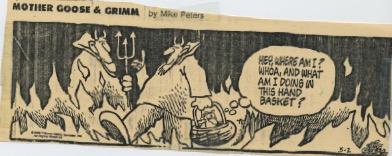Blowing off The Dust…
 I just ran a finger over this blog and dust flew everywhere.
I just ran a finger over this blog and dust flew everywhere.
Sorry.
It’s not that life with diabetes has stopped and I have nothing to talk about; exactly the opposite.
The Diabetes UnConference is coming up in Atlantic City from September 9 – 11, 2016.
DPAC (Diabetes Patient Advocacy Coalition) has new actions and a lot of measurable successes and some important issues coming up.
It’s conference season and I’ve been traveling…. ADA in New Orleans, CWD in Orlando, AADE coming up in San Diego, with a trip to DC to speak at a Congressional briefing thrown in for good measure. Summer is always a happy time for me, as I get to see so many amazing advocates and learn from them.
I’m on the pump, off the pump (Tresiba), on an untethered regimen, adding inhaled insulin… I’m an experiment in the making. My blood glucose levels are not optimum for me as I switch around, but it’s summer and I’m more focused on quality of life than a single A1C.
There is so much welcome news on the Artificial Pancreas front! Bigfoot Biomedical is starting clinical trials. Betabionics is now working with a company with stable glucagon, pushing the dual hormone AP forward. Medtronic is closer to getting FDA approval for its newest AP version. TypeZero and Tandem are working together.
Dexcom G5 got a boost for the non-adjunctive label at the most recent FDA hearing. I know that many in the community don’t see this as a good thing. I’m of the mindset that each of us make our own choices on which tools are best for us to use, based on decisions made with our medical team. Some individuals have no issues with accuracy; others do. There is concern about how this will impact payers and reimbursements and approvals. I get all that. It’s always been an uphill battle to get the supplies we need, but for those on Medicare and heading into Medicare, this decision is important.
And then there is this:
I’ll be migrating over to a new hosting provider very soon. Everything should look the same (you shouldn’t notice much of a difference, I hope), but I have heart palpitations when I think about it.
 So, there will be a brief
So, there will be a brief spring summer cleaning to get rid of the dust and cobwebs and I will be back giving you a piece of my mind regularly. I’ve missed you…








 They have been talking with Bessie’s farmer and negotiated a deal to get a better price to save money. Part of the agreement is exclusivity. For the farmer, who is a business that gets paid by the dairy (and not those of us who drink milk), it’s a great proposition.
They have been talking with Bessie’s farmer and negotiated a deal to get a better price to save money. Part of the agreement is exclusivity. For the farmer, who is a business that gets paid by the dairy (and not those of us who drink milk), it’s a great proposition.


 It’s taken me a few weeks to get back into the swing of things (and by things, I mean life), but I wanted to share my takeaways from the most recent HealtheVoices conference in Chicago. There are some other blog posts that will talk about what happened, but I’m going to give you my perspective. And you know that it will be honest and forthright, because that’s who I am.
It’s taken me a few weeks to get back into the swing of things (and by things, I mean life), but I wanted to share my takeaways from the most recent HealtheVoices conference in Chicago. There are some other blog posts that will talk about what happened, but I’m going to give you my perspective. And you know that it will be honest and forthright, because that’s who I am.

 People talked. (Yes, that’s me.) I was able to share my story and my passion about my community, ending with what I believe: “Find your tribe. Love them hard.” And my tribe got bigger that weekend. I wanted to hear what other communities were doing and how we can support each other.
People talked. (Yes, that’s me.) I was able to share my story and my passion about my community, ending with what I believe: “Find your tribe. Love them hard.” And my tribe got bigger that weekend. I wanted to hear what other communities were doing and how we can support each other.





